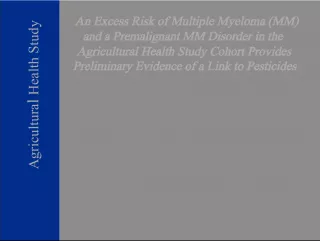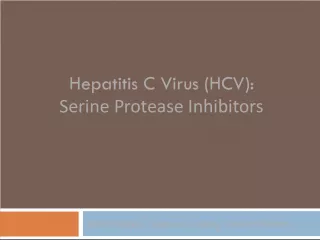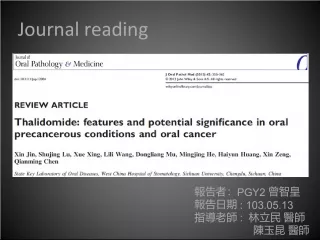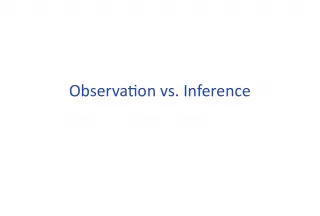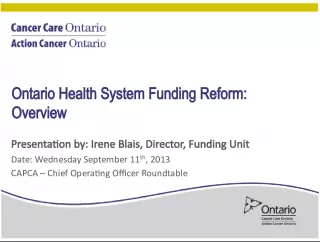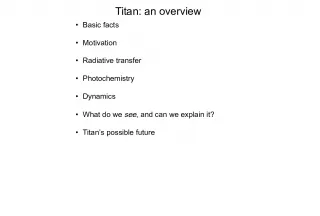Pancreas Cancer: Understanding the Facts


Learn about pancreas cancer, its impact on American lives, and important information about survival rates. This article is written by Nimisha K. Parekh MD, MPH, Assistant Professor of Clinical Medicine at the University of California Irvine and Director of the Inflammatory Bowel Disease Program at the H.H. Chao Comprehensive Digestive Disease Center.
- Uploaded on | 2 Views
-
 navyjacobi
navyjacobi
About Pancreas Cancer: Understanding the Facts
PowerPoint presentation about 'Pancreas Cancer: Understanding the Facts'. This presentation describes the topic on Learn about pancreas cancer, its impact on American lives, and important information about survival rates. This article is written by Nimisha K. Parekh MD, MPH, Assistant Professor of Clinical Medicine at the University of California Irvine and Director of the Inflammatory Bowel Disease Program at the H.H. Chao Comprehensive Digestive Disease Center.. The key topics included in this slideshow are Pancreas, Pancreatic cancer, Cancer, Survival rates, American lives,. Download this presentation absolutely free.
Presentation Transcript
1. Pancreas Cancer Pancreas Cancer Nimisha K. Parekh, MD, MPH Nimisha K. Parekh, MD, MPH Director, Inflammatory Bowel Disease Program Director, Inflammatory Bowel Disease Program H. H. Chao Comprehensive Digestive Disease Center H. H. Chao Comprehensive Digestive Disease Center Assistant Professor of Clinical Medicine Assistant Professor of Clinical Medicine University of California Irvine University of California Irvine
2. Pancreas Pancreas
3. The Facts The Facts 38,000 Americans will be diagnosed with pancreatic cancer this year 38,000 Americans will be diagnosed with pancreatic cancer this year 34,000 will die from the disease this year 34,000 will die from the disease this year pancreatic cancer is the 4th leading cause of cancer-related death in the US pancreatic cancer is the 4th leading cause of cancer-related death in the US 5-year survival rate is 5 percent 5-year survival rate is 5 percent Seventy-five percent of pancreatic cancer patients die within the first 12 months of the diagnosis Seventy-five percent of pancreatic cancer patients die within the first 12 months of the diagnosis
4. The Facts The Facts Low survival rates are due to the fact that fewer than 10% of patients' tumors are confined to the pancreas at the time of diagnosis Low survival rates are due to the fact that fewer than 10% of patients' tumors are confined to the pancreas at the time of diagnosis In most cases, the tumor has progressed to the point where surgery is impossible. In most cases, the tumor has progressed to the point where surgery is impossible.
5. Types of Pancreatic Tumors Types of Pancreatic Tumors Ductal Adenocarcinomas (85%) Ductal Adenocarcinomas (85%) Two thirds in head of pancreas Two thirds in head of pancreas Undifferentiated carcinomas Undifferentiated carcinomas Acinar cell carcinomas (1-2%) Acinar cell carcinomas (1-2%) Sarcomatoid carcinoma/Carcinosarcoma (<1%) Sarcomatoid carcinoma/Carcinosarcoma (<1%) Serous cystic neoplasms Serous cystic neoplasms Mucinous cystic neoplasms Mucinous cystic neoplasms Intraductal papillary mucinous neoplasms Intraductal papillary mucinous neoplasms NeuroEndocrine NeuroEndocrine
6. Who should be screened? Who should be screened? Not everyone should be screened for pancreatic cancer. Not everyone should be screened for pancreatic cancer. Screening makes sense for people who are at risk for the disease typically because of hereditary factors or genetic syndromes that increase the likelihood of developing pancreatic cancer. Screening makes sense for people who are at risk for the disease typically because of hereditary factors or genetic syndromes that increase the likelihood of developing pancreatic cancer.
7. Factors that Increase an Individual's Risk for Pancreatic Cancer Factors that Increase an Individual's Risk for Pancreatic Cancer Cigarette Smoking Cigarette Smoking Alcohol Alcohol BMI/Obesity BMI/Obesity Physical Activity Physical Activity Diabetes?? Diabetes?? Gender (M>F) Gender (M>F) Family History Family History Genetic Syndromes associated with pancreas cancer Genetic Syndromes associated with pancreas cancer
8. Family History Risk Factors Family History Risk Factors Two or more first-degree relatives (parents, sibling, child) with pancreatic cancer Two or more first-degree relatives (parents, sibling, child) with pancreatic cancer One first-degree relative diagnosed with pancreatic cancer at an early age (under the age of 50) One first-degree relative diagnosed with pancreatic cancer at an early age (under the age of 50) Two or more second-degree relatives (grandparent, aunt/uncle, niece/nephew, half-sibling) with pancreatic cancer, one of whom developed it at an early age Two or more second-degree relatives (grandparent, aunt/uncle, niece/nephew, half-sibling) with pancreatic cancer, one of whom developed it at an early age History of a cancer syndrome associated with pancreatic cancer History of a cancer syndrome associated with pancreatic cancer
9. Genetic Syndromes Associated with Pancreatic Cancer Genetic Syndromes Associated with Pancreatic Cancer Genetic Syndrome Genetic Syndrome Genetic Mutation Genetic Mutation Clinical Clues Clinical Clues Hereditary Pancreatitis Hereditary Pancreatitis PRSSI PRSSI History of early pancreatitis (inflammation of the pancreas) of unknown cause History of early pancreatitis (inflammation of the pancreas) of unknown cause Breast-ovarian cancer syndrome Breast-ovarian cancer syndrome BRCA2 BRCA2 History of breast and/or ovarian cancer History of breast and/or ovarian cancer Hereditary nonpolyposis colorectal cancer syndrome Hereditary nonpolyposis colorectal cancer syndrome Mismatch repair genes Mismatch repair genes Personal or family history of early colorectal cancer Personal or family history of early colorectal cancer Familial atypical multiple mole melanoma syndrome (FAMMM) Familial atypical multiple mole melanoma syndrome (FAMMM) CDK2NA/p16 CDK2NA/p16 Multiple melanomas with or without history of pancreatic malignancy Multiple melanomas with or without history of pancreatic malignancy Peutz-Jeghers syndrome Peutz-Jeghers syndrome STK11/LKB1 STK11/LKB1 Benign polyps of the gastrointestinal tract with pigmented macules on the lips, inner lining of the cheeks, and hands/feet Benign polyps of the gastrointestinal tract with pigmented macules on the lips, inner lining of the cheeks, and hands/feet
10. Diagnosis Diagnosis CT Scans CT Scans MRI MRI ERCP ERCP Endoscopic Ultrasound Endoscopic Ultrasound Laparascopy Laparascopy
11. Helical CT and MRI/MRCP Helical CT and MRI/MRCP Helical CT and MRI/MRCP Helical CT and MRI/MRCP
12. MRCP: Pancreatic Cancer MRCP: Pancreatic Cancer Barish, NEJM, July 1999
13. EUS-Guided FNA EUS-Guided FNA Nodal staging Nodal staging ~ Mediastinal: esophageal, lung ~ Mediastinal: esophageal, lung ~ Abdominal/celiac: gastric, pancreas ~ Abdominal/celiac: gastric, pancreas ~ Pelvis: rectal ~ Pelvis: rectal Distant Metastasis Distant Metastasis ~ Liver ~ Liver ~ Pleural/abdominal fluid ~ Pleural/abdominal fluid ~ Adrenal ~ Adrenal
14. Pancreatic Body Mass Pancreatic Body Mass UCSF Patient MRCP x 2; ERCP non-diagnostic; CT negative
15. ERCP vs. EUS for Pancreatic Masses ERCP vs. EUS for Pancreatic Masses EUS Most Sensitive (well over 90%) NCI recommends this over CT guided biopsy ERCP Diagnostic Yield between 40-70% Image courtesy of Van Dam and Brugge, NEJM, 2003
16. Pancreatic Cancer - Detection Pancreatic Cancer - Detection Schoefer et al, Abstract 1530, DDW 2000 EUS detected all tumors less than 2cm
17. Staging of Pancreas Tumors Staging of Pancreas Tumors Stage I. Cancer is confined to the pancreas. Stage I. Cancer is confined to the pancreas. Stage II. Cancer has spread beyond the pancreas to nearby tissues and organs and may have spread to the lymph nodes. Stage II. Cancer has spread beyond the pancreas to nearby tissues and organs and may have spread to the lymph nodes. Stage III. Cancer has spread beyond the pancreas to the major blood vessels around the pancreas and may have spread to the lymph nodes. Stage III. Cancer has spread beyond the pancreas to the major blood vessels around the pancreas and may have spread to the lymph nodes. Stage IV. Cancer has spread to distant sites beyond the pancreas, such as the liver, lungs and the lining that surrounds your abdominal organs Stage IV. Cancer has spread to distant sites beyond the pancreas, such as the liver, lungs and the lining that surrounds your abdominal organs
18. Treatments Treatments Surgery Surgery Radiation Radiation Chemotherapy Chemotherapy Combination of above Combination of above
19. Anatomy of a Whipple Anatomy of a Whipple
20. Final Points Final Points Familial Pancreatic Cancer /National Familial Pancreas Tumor Registry Familial Pancreatic Cancer /National Familial Pancreas Tumor Registry Hirshberg Foundation for Pancreatic Cancer Research Hirshberg Foundation for Pancreatic Cancer Research NIH NIH UCLA, UCI, City of Hope have pancreas programs UCLA, UCI, City of Hope have pancreas programs Healthy lifestyle Healthy lifestyle

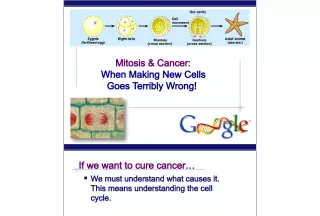
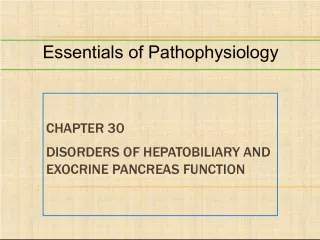






![Exploring [Topic]: Answers, Facts, Opinions, and Resources](/thumb/20000800/exploring-topic-answers-facts-opinions-and-resources.jpg)

